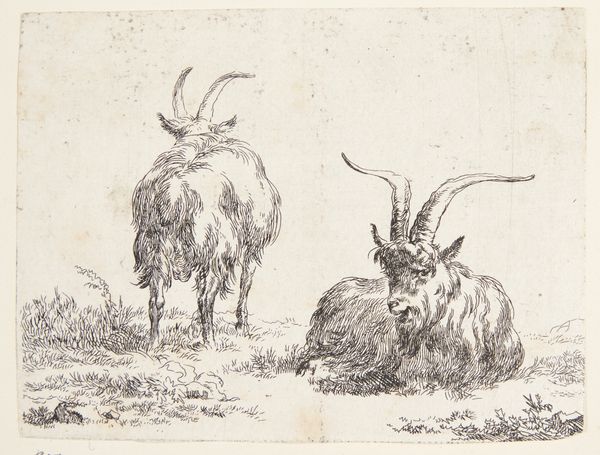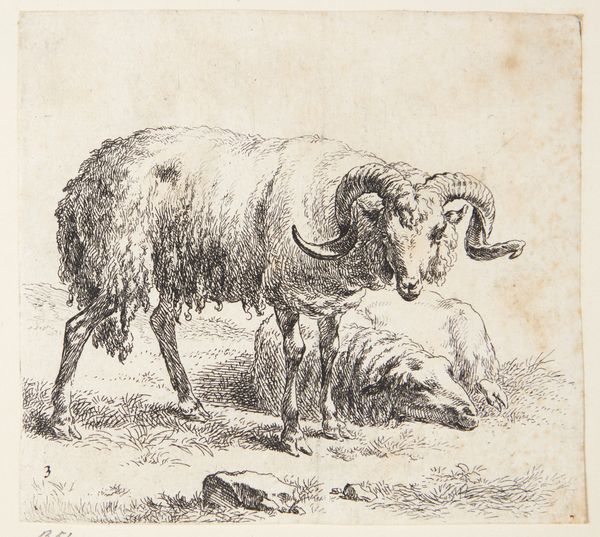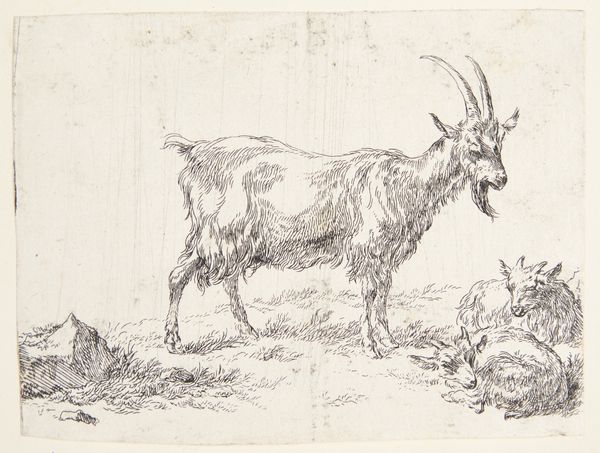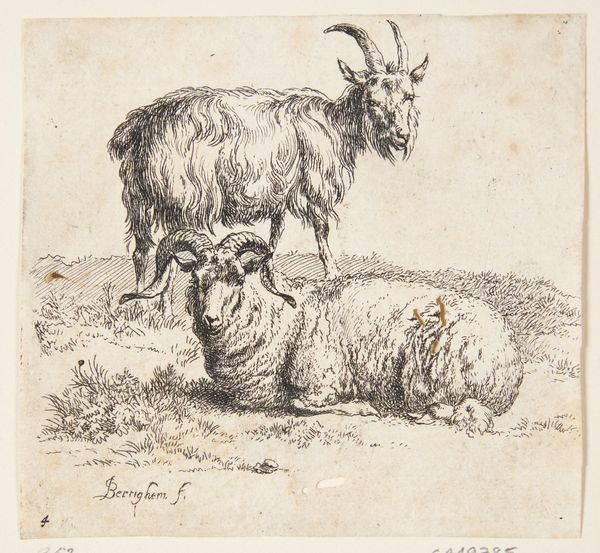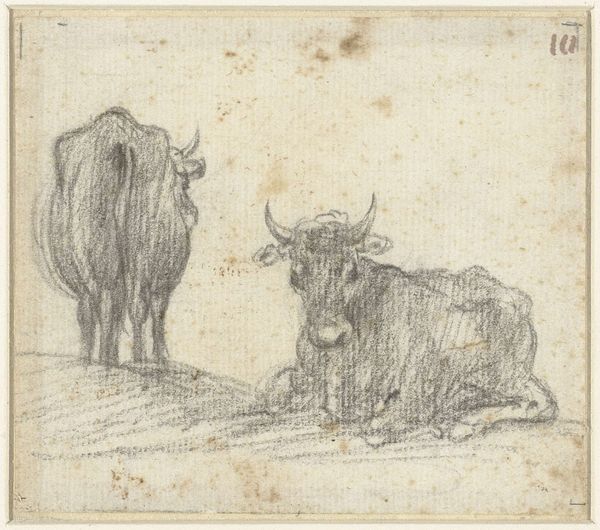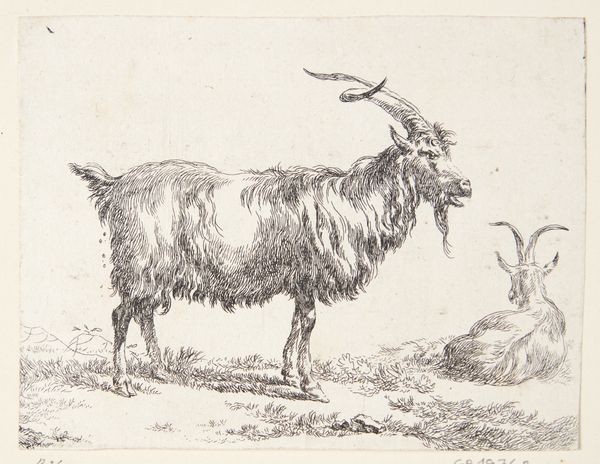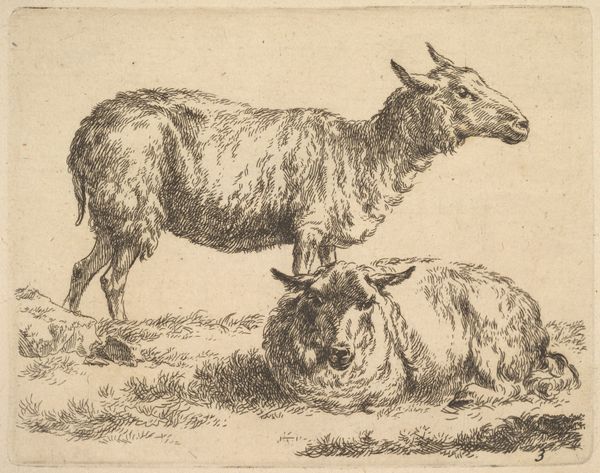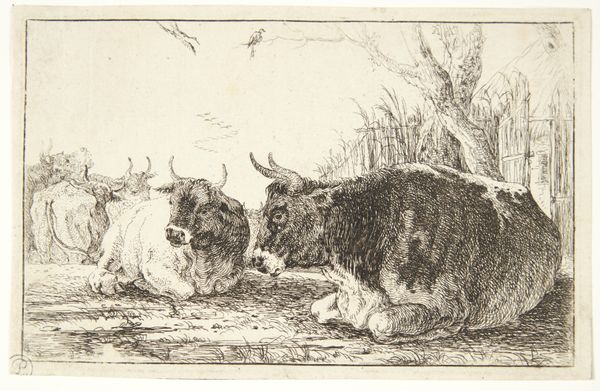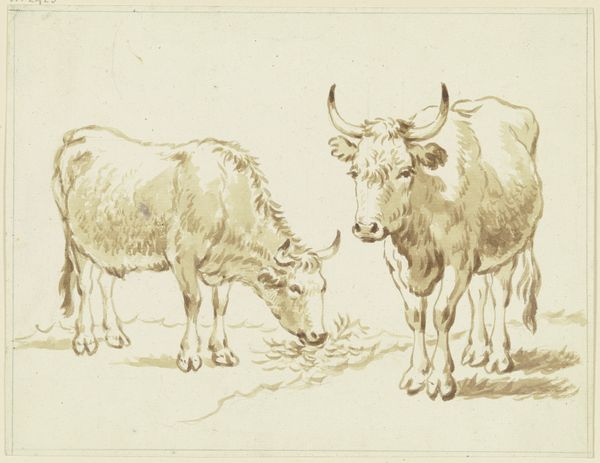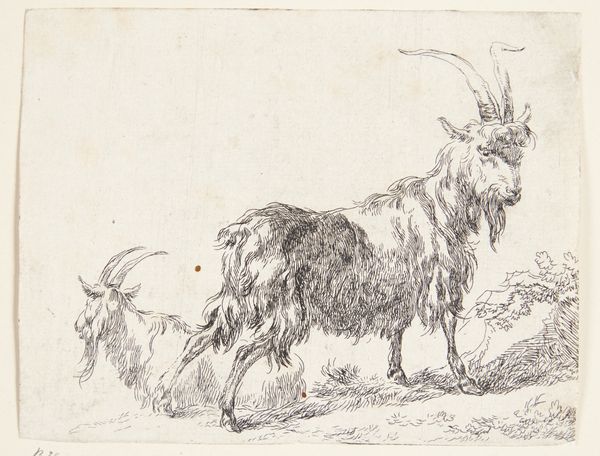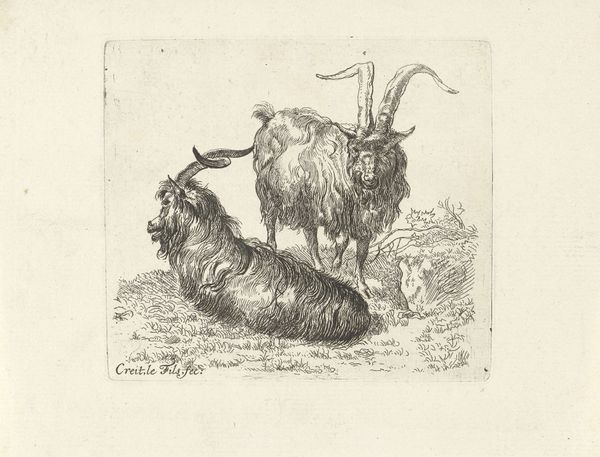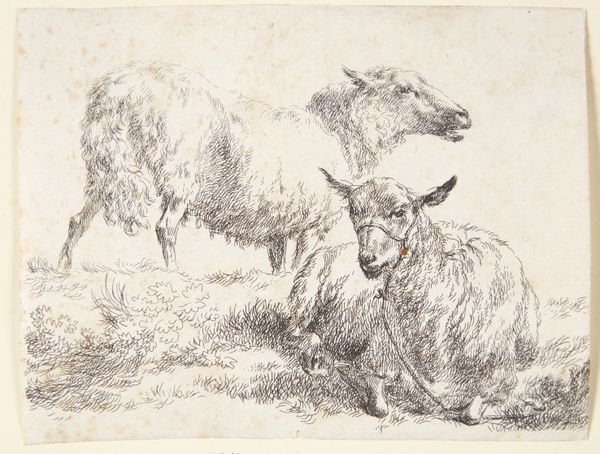
drawing, print, etching, ink
#
drawing
#
dutch-golden-age
# print
#
etching
#
landscape
#
ink
#
genre-painting
Dimensions: 97 mm (height) x 128 mm (width) (bladmaal)
Curator: The texture! It’s so palpable; I want to reach out and touch that bristly fur. Editor: Well, before you do that, let me orient our listeners. This etching is entitled "To geder," and it was crafted by Nicolaes Berchem sometime between 1620 and 1683. Currently, it resides here at the SMK, Statens Museum for Kunst. What intrigues you so much about the fur, specifically? Curator: It's all line and form. The hatching! Berchem has so economically described volume and weight, only through building up the thinnest strokes, there is movement within stillness, that draws you in. What readings spring to your mind when you observe this work? Editor: I’m immediately struck by the theme of rural labor and animal husbandry, popular in Dutch genre painting. These goats were a signifier of pastoral simplicity. I would not say, however, this an idealized rustic idyll. This image touches upon class and access within rural society. Goats had been historically affiliated with low social status—how does that frame your observation of formal simplicity and texture? Curator: Precisely! The textures communicate this reality: this piece refutes and complicates any notion of idealization. The line is quite vigorous. See how wiry the goat on the right appears, standing tall, seemingly defiant with that magnificent, curled horn, while the other bows its head to graze. The dichotomy sets up a dialogue. Editor: It speaks to an important dynamic – an ecological understanding that considers socio-economic imbalances, gender and the environment that makes the natural landscape itself a site of both labor and, perhaps, resistance. It suggests that these beings themselves are critical voices. I also wonder, were there also veiled religious elements, since goats also carry some symbolism around sacrifice and ritual within early Dutch traditions? Curator: Indeed, by delving deeper into Berchem's historical period and artistic choices, the initial attraction and readings have only become richer. There is nothing more static. Editor: Exactly! Engaging with art is an evolution of seeing. A dance between the aesthetic and its context opens us to newer dimensions, revealing intricacies that echo through time and society.
Comments
No comments
Be the first to comment and join the conversation on the ultimate creative platform.
